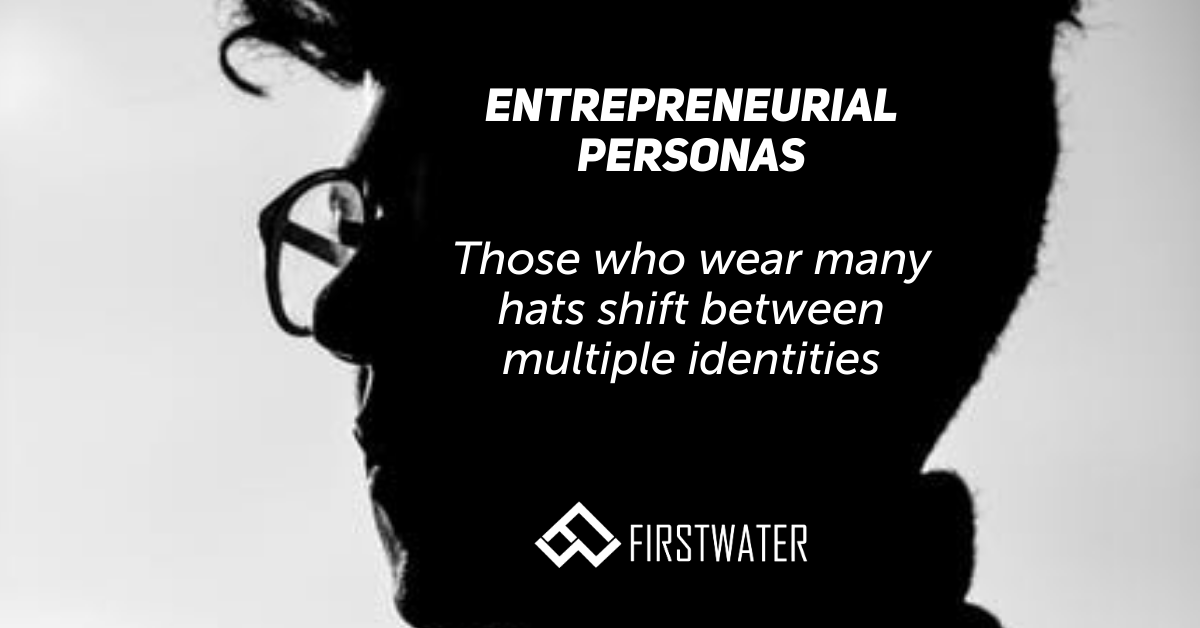Entrepreneurs know what it is like to wear many hats. Turns out, they also know what it’s like to be different people. Throughout the entrepreneurial journey, from forming a company to the big sale and riding off into the sunset, a business owner embodies three specific personas.
Each of these personas comes with its own pain points and inflection points, which we will highlight here. Like the oscillating trajectory of a business, an entrepreneur may move between personas throughout the journey – rarely does success come as a straight line.
The Opportunity Maker
The Opportunity Maker persona describes every entrepreneur whose goal is starting a business and creating a proven, sustainable business model. It is fair to say this is the entrepreneurial persona baseline. Within every company, the entrepreneurial spirit is best defined by the Opportunity Maker’s persona, the ability to create.
The tipping point for this persona is when initial success is achieved via proof of concept and there is a desire to pick up the pace. Financially, this means reinvesting profits (even running unprofitability) and/or bringing in outside debt or equity capital to fund growth and take advantage of new opportunities. However, the Opportunity Maker struggles when the growth and financial roadmaps are not connected. The size of the business may not justify a full-time finance squad to map out what financing is required, the embedded risk, or the impact of choosing one type of capital over another. A wrong decision can result in years and years of pain, if not failure.
To get it right, Opportunity Makers must ensure these growth and capital roadmaps are aligned, and that any capital partner they bring into the business is aligned with their vision. This requires a forward-looking view, an understanding of the terms and restrictions that come with different types of capital, and the ability to attract the right partners.
The Opportunity Taker
The Opportunity Taker is a business owner whose company is profitable, has a nice flow of prospects, and has the potential to continue growing. This entrepreneur may not be focused on, but seeks to take advantage of, opportunities as they arise even if there is currently no direct visibility to what those opportunities may be.
Despite their successes to date, Opportunity Takers may struggle with the day-to-day management of their business as they wrestle with a larger team and more complicated operations than when first launching the business. Consequently, they carry around a great deal of stress, and worry about the “what ifs.” The natural counter is to work harder, often to the point of being overworked, but that fails to mitigate negative surprises which seem to surface at the worst of times.
To sleep more soundly at night, the Opportunity Taker must position the business and team to proactively mitigate risks, which helps the organization be prepared to seize organic or opportunistic growth opportunities. He or she must hold to the vision of the growth roadmap, utilize projection capabilities to increase visibility, assess multiple scenarios and outcomes, and continue to make sure that partners and capital providers are aligned and support momentum (as opposed to stifling it). The goal is to take steps toward a more meaningful quality of life with the confidence that each step taken is toward the long-term summit.
The Monetizer
The Monetizer is an owner considering a business exit, regardless of whether the timing of such exit is defined or not. The eventual objective is the monetization of the value created within the business, planned or unplanned. The Monetizer is “always ready to transact” and is thoughtful about valuation, the exit and transition strategy, and the impact on employees.
In considering the prospect of selling, the Monetizer is often concerned about the unknowns. These include the emotional impact of walking away, the risk of leaving money on the table, or not knowing whether a transition period is required (and for how long). Monetizers may not know what specifically makes their businesses sell-able, and they do not know what the people on the other side of the table are thinking. The pressure is on to optimize the value of the business, and then extract that value.
Monetizers understand that timing is everything. They have more options when the timeline for selling the business is within three years rather than three weeks. To be successful, the Monetizer must build a team and processes that allow the business to flourish without him or her, and must be able to communicate the next phase of the growth and capital roadmaps to a buyer. Here, the real goal is maximization, not just monetization.
The Same DNA
While each of these personas express different pain points and inflection points, they all have three very important things in common: (1) they possess a forward-looking mentality to conceptualize the next phase; (2) they recognize they cannot accomplish their goals without the right team, tools, and business processes; and (3) they may not naturally possess all of the skills and experience required to address their pain points.
Apart from fatal deficiencies in a product or service, a lack of finance capabilities and access to capital are top reasons why businesses fail, even those that were previously successful. To conquer this risk, entrepreneurs must step back and assess their growth and capital roadmaps. Finance capabilities, such as performance analysis, forecasting, and scenario analysis are indispensable tools to manage the journey.
Whichever persona you may currently embody, the path to a successful Monetizer cannot be traversed without wresting control of the other personas. Before you take the next step, be sure you know which (and who) you are. To learn more, check out the book, Relational Finance, available on Amazon.


